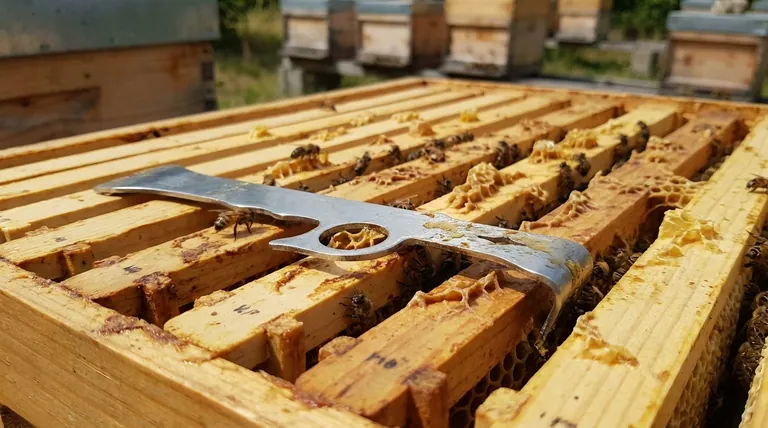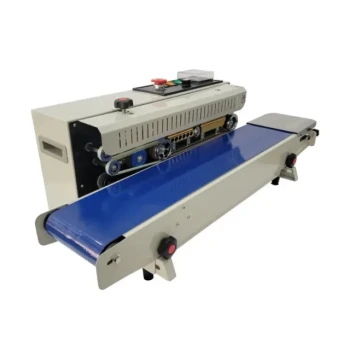To adjust the strength of a connection, you must change its effective length, typically by rotating the body of a tensioning device that incorporates a threaded eye. This action either pulls the connection points closer together to increase tension or pushes them apart to decrease it.
The core principle is not about changing the material's inherent breaking strength, but about adjusting the preload, or the amount of static tension, within the connected system. Understanding how to properly set this tension is critical for both safety and performance.

The Principle of Mechanical Tensioning
At the heart of this adjustment is a simple machine: the screw thread. By using a component like a turnbuckle or rigging screw, you can translate rotational motion into powerful linear force, allowing for precise control over the tension in a cable, rod, or stay.
What is a "Threaded Eye"?
A threaded eye is an end-fitting, often an eye bolt, that has a long threaded shank. It is designed to screw into a central body. Typically, you will find two of these working in opposition within a single tensioning device.
One end will have a right-hand thread, and the other will have a left-hand thread. This is the key to how the device functions.
How Length Adjustment Controls Tension
When you rotate the central body of the tensioner, both threaded eyes are drawn inward simultaneously, shortening the overall length of the assembly. This shortening pulls the attached structures together, increasing the tension.
Rotating the body in the opposite direction pushes the threaded eyes outward, lengthening the assembly and decreasing the tension. This provides fine-grained control over the connection's tightness.
Tension vs. Strength: A Critical Distinction
It is vital to understand that this adjustment controls tension (preload), not the ultimate breaking strength of the components. The breaking strength is a fixed property of the material and its dimensions.
Applying tension "preloads" the system. This preload can be essential for stability, but excessive tension simply adds stress to the components and their anchor points, bringing them closer to their failure point.
Understanding the Trade-offs and Risks
Improperly adjusting tension is a common source of mechanical failure. Both too much and too little tension introduce significant risks that must be managed.
The Risk of Overtensioning
Applying too much tension is a frequent mistake. This can over-stress the cable, the tensioner itself, or, most commonly, the points where the connection is anchored.
Excessive preload can lead to fatigue, warping of the anchored structure, and a sudden, catastrophic failure under less-than-expected operational loads.
The Danger of Undertensioning
A connection that is too loose can be just as dangerous. In a structural system like a guy wire for a mast, insufficient tension allows for excessive movement and sag.
This slack can lead to shock loading if the system is suddenly pulled taut by an external force like a gust of wind. Shock loads can generate forces many times greater than the static load, leading to immediate failure.
Setting the Correct Tension for Your Application
The right amount of tension is entirely dependent on your goal. Before making any adjustments, you must clearly define the purpose of the connection.
- If your primary focus is structural stability: Your goal is to apply a specific, calculated preload to counteract anticipated forces (like wind or sway) and prevent the connection from ever going slack.
- If your primary focus is rigging and lifting: Your goal is to tighten the connection just enough to remove all slack before the lift begins, ensuring the load is applied smoothly without any shock.
- If your primary focus is system alignment: You are using the tensioner as a tool to pull components into the correct position, and the final tension should be sufficient to hold that alignment without over-stressing the assembly.
Properly adjusting your connection is a matter of applying controlled tension, not just brute force.
Summary Table:
| Adjustment Action | Effect on Connection | Key Principle |
|---|---|---|
| Rotate Tensioner Body Clockwise | Shortens length, Increases Tension | Pulls connection points together |
| Rotate Tensioner Body Counter-Clockwise | Lengthens length, Decreases Tension | Pushes connection points apart |
Need reliable, high-strength tensioning equipment for your commercial or distribution needs?
Properly adjusting connections is critical for safety and performance. HONESTBEE supplies durable beekeeping supplies and equipment, including robust rigging hardware, to commercial apiaries and distributors. Our wholesale-focused operations ensure you get the quality components needed to apply precise tension safely.
Contact HONESTBEE today to discuss your equipment requirements and ensure your systems are secure.
Visual Guide

Related Products
- HONESTBEE Advanced Ergonomic Stainless Steel Hive Tool for Beekeeping
- Professional Bee Frame Wiring Tool with Integrated Tensioning System by HONESTBEE
- HONESTBEE 15-in-1 Beekeeper Multi-Tool with Hammer and Pliers for Beekeeping
- HONESTBEE Premium Italian Style Hive Tool with Hardwood Handle
- HONESTBEE Classic Pry Bar Hive Tool with High Visibility Finish for Beekeeping
People Also Ask
- What are the basic tools for beekeeping? Essential Starter Kit for Safe & Successful Hive Management
- What tools are used for cleaning frames? A Beekeeper's Simple 4-Tool Guide
- What are some common uses of a hive tool? Essential Multi-Purpose Tool for Every Beekeeper
- What is the hole in a hive tool for? A Multi-Tool for Apiary Repairs and Maintenance
- How should beekeepers handle bees when using a hive tool? Master Calm, Deliberate Techniques
















